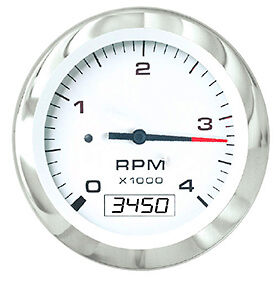
Imagine running your car at 3450 RPM – all the time! Think of the gas expense and the wear and tear on your engine, if you raced around with the tach at 3500!
Well, that’s what your standard pool pump does everyday. The motor shaft inside spins at over 3400 rpm, which uses a lot of energy and puts out a lot of heat, about 150° – too hot to touch.
A Variable Speed (VS) pool pump operates at several speeds – low, medium or high, to optimize energy usage. The long-life, permanent magnet motor is cool to the touch, and is quiet as a breeze. But the best part is, VS pool pumps can save up to 80% in electrical cost.
By 2021 – most new pool pumps sold in the U.S. are required to be Variable Speed, as mandated by the US Energy Dept.
Variable Speed Pool Pumps
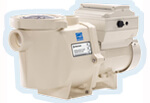
The Pentair Intelliflo VS pool pump is Pentair’s flagship VS pump, made for over 15 years. With 2″ unions, and speeds from 600-3450 rpm, capable of producing over 150 gpm, it can handle large waterfalls, or pools over 50,000 gallons. The IntelliFlo has 8 programmable speeds and times.
The TriStar VS pump is one of two new VS pool pumps that are attractively priced 33% less than the EcoStar. With 2″ unions, the Max Flo VS has 3 programmable speeds of 600-3000 rpm, capable of flow rates of over 100 gpm, for pools over 40,000 gallons, or large water features.
The Super Pump VS is a familiar design, mates up to existing superpumps and uses many of the same parts. 1.5″ pipe connections and 3 programmable speeds of 600-3000 rpm, with flow rates of up to 75 gpm, for pools up to 30,000 gallons.
No matter what size your pool is, VS pumps are programmable to the right speed needed for the job. VS pumps “dial-in” the most effective speed, to match the pipe size, filter size and pool size – for the most efficient operation possible.
VS Pool Pump Installation
Remove Old Pump: With the pump off, use a hacksaw to cut through the pipe that comes into the pump and the pipe that comes out of the pump.
Cut at a location where you have 2-4″ of clear pipe, to connect a pvc coupling or other fitting to connect in and out of the new pump. In some cases you may need to sacrifice a valve, or cut back further on the pipe, to where you can connect a new fitting.
With the pump plumbing cut, remove the bare copper wire, or bonding wire attached to the motor. Shut off the power at the breaker before opening the rear of the motor and removing the 3 wires that come into the pump – 2 power lines and a ground wire. Loosen the conduit connector, pull the wires out of the pump – and now you can move the old pump out of the way.
Wire up New Pump: You must have 230V to wire a VS pump. To determine your current voltage, you can check your timeclock label or the wiring diagram on the motor, or use a AC volt meter to check the incoming power.
For most inground pools, an existing 15 or 20 amp breaker, and 230 volts is perfect. Just simply bring the old pump wires into the motor drive by removing the access cover. Follow the diagram label to connect your two 115V leads, and your ground wire, then tighten up the conduit to the box.
Variable speed pumps don’t get wired into the back rear of the motor, like standard pool pumps, but rather into the Variable Drive unit. On the side of the box or control panel mounted onto the motor is where we are going to bring the 2 hot leads or wires, from the breaker.
Attach the flexible conduit fitting onto the drive motor housing, and connect both wires, attaching them to L1 and L2. It doesn’t matter which wire connects to L1 or L2. The ground wire should attach to the green screw.
Reconnect your bonding wire and the wiring is complete! If you currently use a timeclock for your pool pump, the programming interface makes it obsolete. Just remove the ‘OFF’ timer and leave the switch turned on.
As compared with two-speed pumps, wiring up a VS pool pump is a cinch! No need to add a fourth low-speed wire, and switch out the timeclock. In fact you don’t need a timeclock at all anymore, as your new VS pump has a built-in timer.
Plumb the New Pump: If you are replacing a regular Max-Flo or SuperPump with the New VS models, the plumbing will line right up, and you can even reuse the old fittings. If needed, you can adjust the pump base or shim the pump to raise it to the level to meet incoming pipes.
Glue 2″ PVC pipe directly into the unions on the MaxFlo and EcoStar, or wrap the threaded 1.5″ fittings of the SuperPump 5x with Teflon tape, and tighten it into the pump. Be sure to use fresh PVC glue and primer for best results with glue joints.
Allow the glue to set up for just a few minutes, and you can prime up the pump basket with water and test out your new VS pump.
Reducing restriction is very important for a VS pump, if you want to realize the most energy savings. Sweep elbows and 2 or 2.5″ pipe is recommended, as well as other ways to reduce resistance in the system, such as high flow cartridge filters, and removing unused equipment in the plumbing system.
Re-plumbing to reduce the number of 90’s used can make a big difference, as does replacing a side-mount Multiport valve with a Slide Valve for sand and DE filters, or swapping a 1.5″ Multiport with a 2″ Multiport. The less restrictive you can make the circulation system, the more money you will save!
Menu driven interface guides you through set-up and programming of your run times and run speeds.
From the get-go, you’ll start saving 75% of your pool pump electrical expense. Just by working smarter, not harder! For more information, see our full line of Hayward VS pool pumps in our Hayward Pool Pump Superstore!


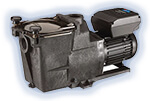

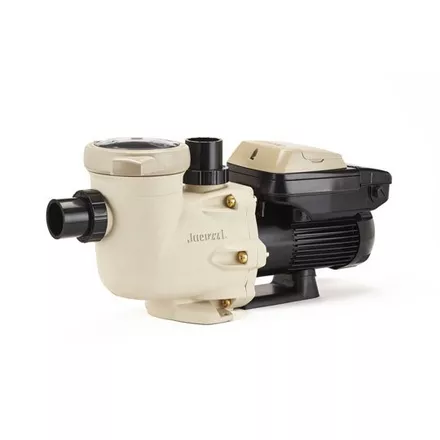

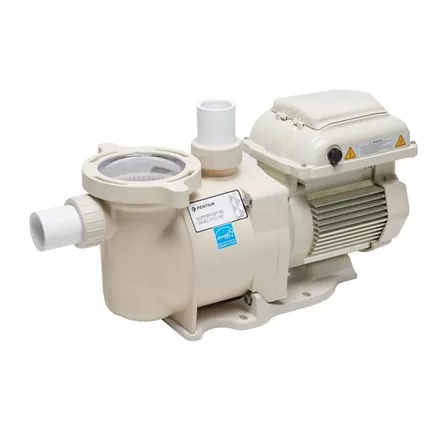
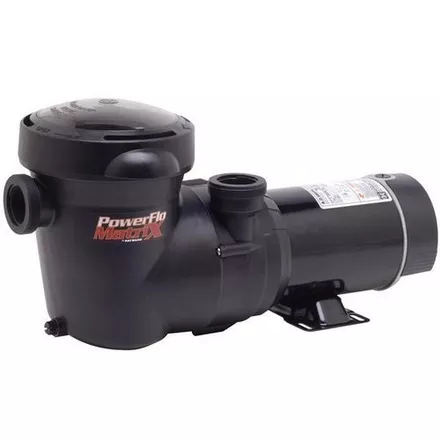
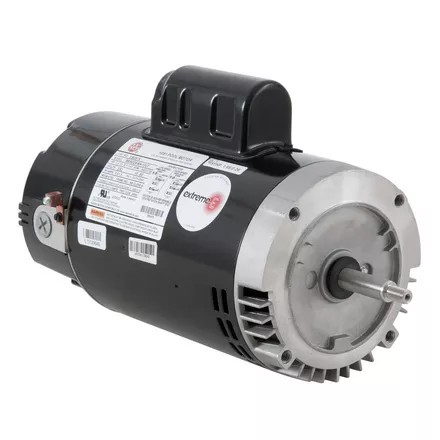
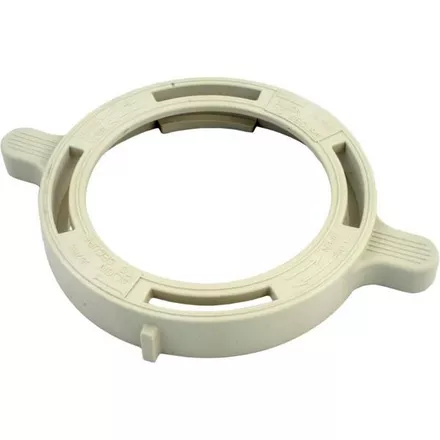

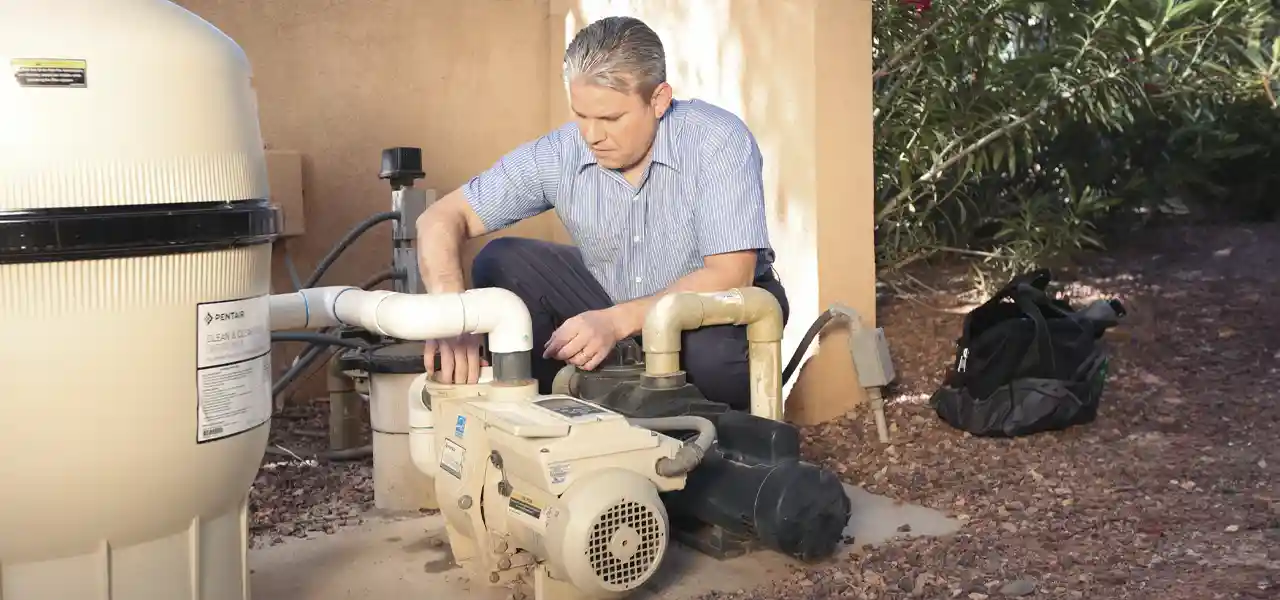
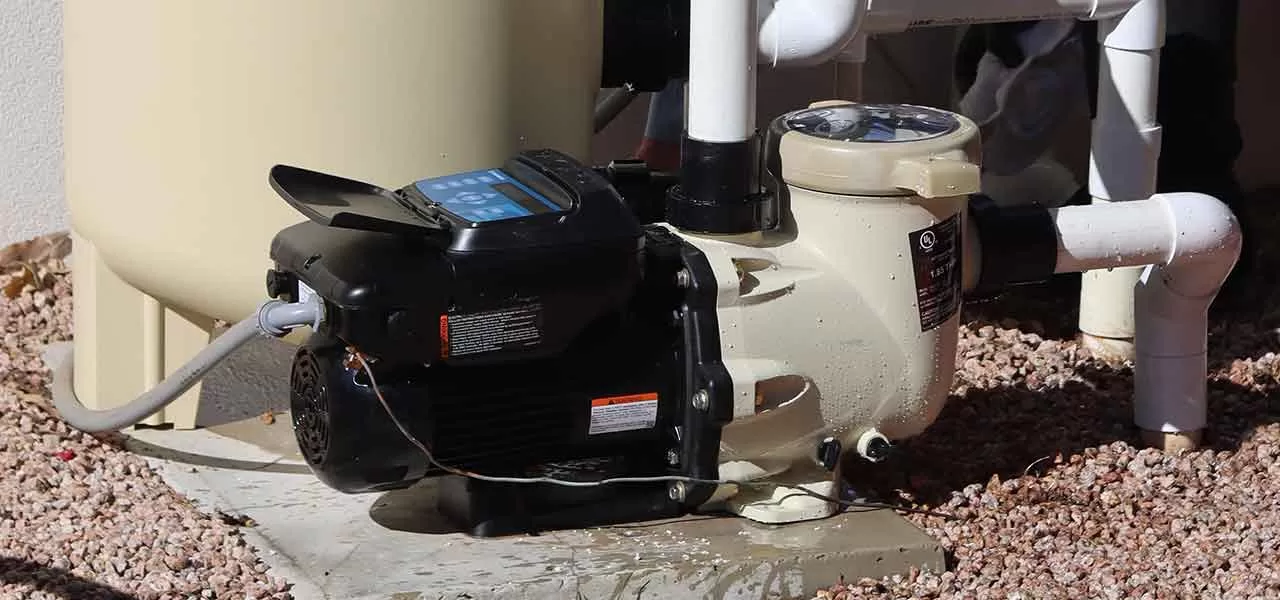
I want to upgrade my pool pump to a 1.5 hp variable speed pump. I currently have a 1hp Hayward super pump (single speed) that plugs to an outlet. I have 3 wires coming from my electric panel going to a timer. Can I still wire the new variable speed pump with this set up? I know I can do away with the timer but I feel like I will be missing another hot wire since it’s a variable speed pump.
Jorge, there are some VS pumps that will accept 110V, but most need 220V. The Waterway 140 VS would be a good choice. Or the Pentair Superflo VS can also accept 110V.
Davy, thank you for your input. I am almost ready to pull the trigger on this 110v pentair superfluo vs pump. I just want to make sure this pump will fit my pool’s configuration. I have a 22.5k gallon pool with 2 skimmers, 2 return jets, a waterfall and no main drain. The pool is Plummed using 2” pvc rigid pipe. Using an 8 hour turn over rate I would be at 47gpm. The feet of head is about 50. I am running a de filter with 36sqft of filtration area and a design flow rate of 72gpm. I was looking at the performance curve for this pump and it seems that for a 110v hook up I am just making it with this pump. I am not 100% sure I am reading the curve correctly. Do you think this pump will fit my configuration? Thanks
Hi Jorge, at 50 ft of head, this pump would be at maximum flow rate of about 65 GPM, or 55 GPM on Speed 1, probably 30 GPM speed 2 and 20 GPM speed 3, even though the speeds 2 and 3 don’t reach 50 ft of head, there will still be flow, and you can fine tune the RPM of the pump. Looks like a good choice to me, for your system. If possible, use a sweep elbow when plumbing it from pump to filter. This one is easy to use > https://www.intheswim.com/p/2-90-deg-cpvc-union-socket-to-male-insert-pipe-mip
i have a hayward maxflo sp2300vsp variable speed pump. how can i wire it using time switch device. i want to operate the pump automatically 24/7 with timed stop and start sequence. the pump itself has run/stop button, i have no idea what to do to control it automatically using time switch/clock. Please help me on what to connect my time switch/clock device.
Hi Ramel, the good thing about a variable speed pump is that they have a built-in timeclock, allowing you to program start and stop times. No external time clock is needed with Hayward VS pumps. If you follow the instructions in section 4, 5 and 6 of the owners manual, starting a the bottom of page 9, it will guide you thru how to wire up the motor, and how to program run times.
Thank you for your response, this is very helpful and confirms what what I was thinking. I would likely run on high during the day and switch to low speed for the night at first and see how that works. We do not have any water features or pool cleaners. There is an OLD salt system but we do not use it. We do have a heater but do not use it all of the time. We are installing an offline chlorine feeder to try.
The switch on the pump is not labeled and the instructions from Hayward do not include anything about the switch. Do you know which speed is which on the switch? Is it necessary to turn the pump off to change the speed (I was assuming yes)? Thanks again!
Hi, I’m not sure which side Hi and Lo are on the switch, it depends which way you are looking at it, lol. I think it’s marked, if you look very closely. And I’m also not sure if this 3-way switch is Hi-Off-Lo, or Hi-Lo-Off, but I suspect the latter.
I just purchased a Hayward super pump 2 speed from In the Swim. We already have a T104 timer but never use it as we run our pool 24/7. With the speed switch on the back of the pump is there a need for a second T106 timer? We would run the pool on low speed and only use high speed when vacuuming and opening the pool.
Hi Jennifer – if you wanted to control the pump with a timer, you would install the T106 timer, which handles the 4th, low-speed wire. If you want to try it first manually, flipping the switch to high speed for heating, backwashing, vacuuming, water features, spa, or additional skimming, or when adding chemicals, you can just wire it regular 230V, from the T104 into the pump, the same way it was installed before, and then use the switch to put it on high speed, and back to low. For best results, you may need nearly daily high speed operation, of at least a few hours per day, or water quality may suffer. However every pool is different, so see how it goes using the switch, and if later you decide that you want more convenience, or can’t keep up with a daily demand for high speed filtering/skimming, then you can tack on the T106 clock (or the P153 digital clock), and set 1 or 2 periods of high speed operation daily. Also be aware that low-speed operation may not pull enough chlorine from chlorinators, or salt systems, and heaters and pool cleaners may not work, with low speed.